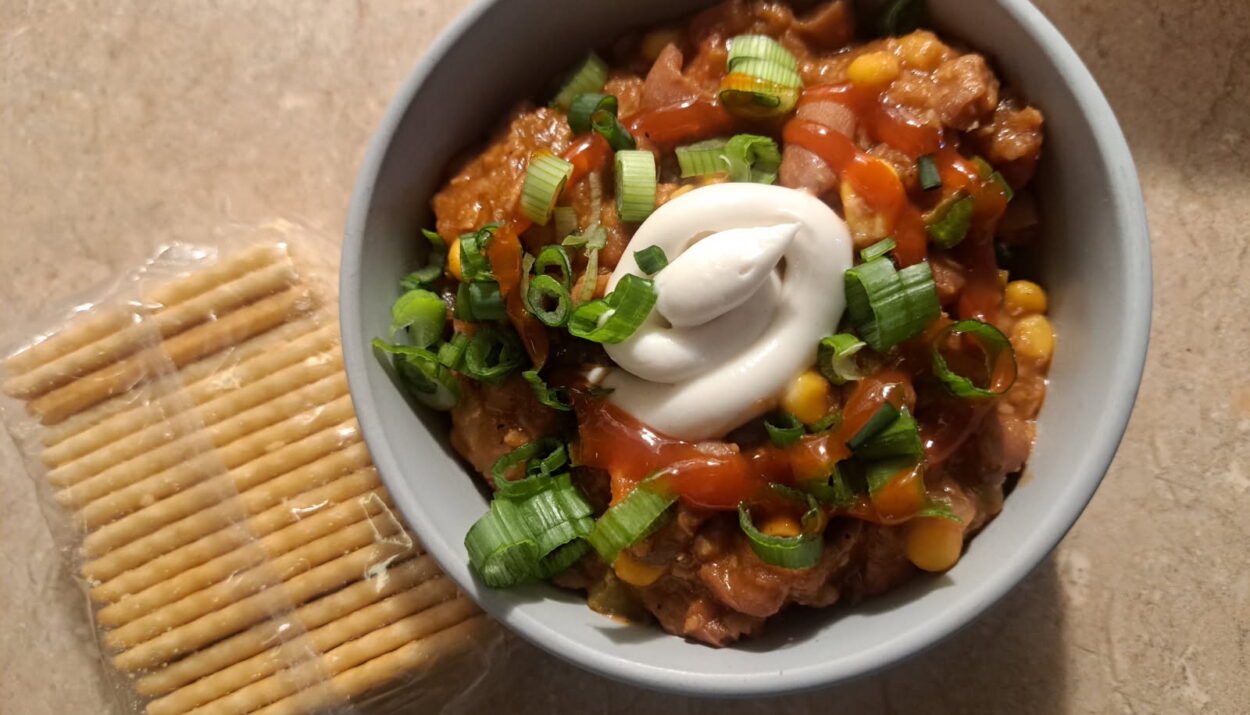The history of chili is rich and diverse, tracing its roots to various cultural influences. While the exact origin is debated, chili is believed to have originated in the early 19th century in the region that is now the American Southwest. The dish evolved as a fusion of Indigenous, Spanish, and Mexican culinary traditions.
One popular theory suggests that a group of Canary Islanders, who migrated to San Antonio in the 1700s, brought with them a spicy stew called “chili.” Another theory attributes the dish to Mexican immigrants in the Texas region, adapting their traditional meat and spice stews.
Chili gained popularity in the late 1800s as a cheap and filling food for cattle drivers and pioneers. It became a staple in American culture, especially in the Southwest, where chili cook-offs and competitions began to emerge.
In the early 20th century, canned chili con carne hit the market, further spreading the dish’s popularity. Chili became associated with a sense of regional identity and pride, with various areas claiming to have the best and most authentic recipes.
Today, chili has diversified with countless variations, including vegetarian and vegan versions. It remains a beloved comfort food, enjoyed across the United States and beyond, with annual chili cook-offs and festivals celebrating its flavorful history.
After about two weeks of requests to make chili, I finally decided to give it a shot. However, I was a bit hesitant since I had never made vegan chili before. The last time I made chili, I was still eating meat, and cooking without it can be quite different.
I ended up going to the local health food grocery store to buy the ingredients, but in hindsight, I wouldn’t recommend it. I could have gotten everything at Target and saved about $10. Also, I used to avoid canned food because of the aluminum, but as I get older, I find myself getting lazier.
It is what it is (lol).
The chili turned out so amazing that the next day, I added more tomatoes and beans to make sure there was enough for seconds.
Enjoy this recipe—it’s definitely the best vegan chili I’ve ever had. For my fellow vegetarians, feel free to add cheese and sour cream.
At no extra cost to you, some or all of the products featured below are from partners who may compensate us for your click. It’s how we make money. This does not influence our recommendations or editorial integrity, but it does help us keep the site running.
Here is the revised HTML with improved headings and numbered steps that should be visible on mobile:The Best Vegan Chili Recipe
Recipe Details
| Prep Time: | 20 minutes |
|---|---|
| Cook Time: | 30-40 minutes |
| Total Time: | 50-60 minutes |
| Servings: | 6-8 |
Ingredients:
- 1 tablespoon olive oil
- 1/2 onion, diced and sautéed
- 1/2 onion, diced and raw (for added crunch)
- 3 cloves garlic, minced
- 2 cups chopped bell peppers (any color)
- 1 cup meat substitute (such as Beyond Meat or Impossible Foods), diced
- 2 cups cooked kidney beans (canned or cooked from scratch)
- 2 cups cooked black beans (canned or cooked from scratch)
- 2 cups diced tomatoes
- 2 cups vegetable broth
- 1 teaspoon chili powder
- 1 teaspoon ground cumin
- 1/2 teaspoon cayenne pepper (optional)
- Salt and pepper, to taste
- Fresh cilantro, chopped (optional)
- Vegan cheese shreds or sliced green onions (optional)
Instructions:
- Heat the olive oil in a large pot over medium-high heat.
- Add the diced onion and cook until translucent, about 5 minutes.
- Add the garlic and cook for an additional minute.
- Add the bell peppers and cook until tender, about 5 minutes.
- Add the meat substitute and cook until browned, about 5 minutes.
- Stir in the chili powder, cumin, and cayenne pepper (if using) and cook for 1-2 minutes.
- Add the kidney beans, black beans, diced tomatoes, and vegetable broth.
- Bring the mixture to a simmer and cook until the flavors have melded together and the chili has thickened slightly, about 20-30 minutes.
- Stir in the raw diced onion for added crunch.
- Season with salt and pepper to taste.
- Serve hot, topped with chopped fresh cilantro, vegan cheese shreds, or sliced green onions (if desired).
Notes:
- You can customize this recipe to your taste by adding other spices or ingredients, such as diced jalapenos or sliced mushrooms.
- For a thicker chili, reduce the amount of vegetable broth or add a little cornstarch or flour to thicken.
- Leftover chili can be stored in the refrigerator for up to 5 days or frozen for up to 2 months. Reheat and serve.







